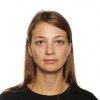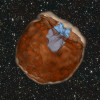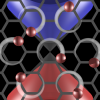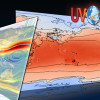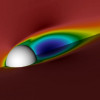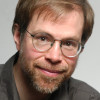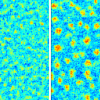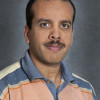News Center
David Donofrio to Lead Computer Architecture Group
David Donofrio—a veteran Computer Systems Engineer at Berkeley Lab—has been selected to lead the new Computer Architecture Group in the Computational Research Division (CRD). Read More »
First NESAP Post-doc Takes on BoxLib
Brian Friesen, the first of eight post-doctoral researchers participating in the NERSC Exascale Science Applications Program, is now working full time at NERSC. His mission is to work with CRD's CCSE to improve the effiiciency of BoxLib codes for new supercomputer architectures. Read More »
CCSE’s Juliane Mueller Optimizes Codes to Cut Computational Costs
Finding a way to keep computing expenses down while still getting the most science from the simulations is the specialty of Juliane Mueller, the 2014 Alvarez Fellow in Berkeley Lab's Computational Research Division. She’s a member of the Center for Computational Sciences and Engineering, which develops algorithms to study complex problems ranging from combustion to supernovae.
Read More »
Meraculous: Deciphering the ‘Book of Life’ With Supercomputers
A team of scientists from Berkeley Lab, JGI and UC Berkeley, simplified and sped up genome assembly, reducing a months-long process to mere minutes. This was primarily achieved by “parallelizing” the code to harness the processing power of supercomputers. Read More »
Hunting Supernova with Supercomputers
Using a “roadmap” of theoretical calculations and supercomputer simulations performed at NERSC by Berkeley Lab’s Daniel Kasen, astronomers observed for the first time a flash of light caused by a supernova slamming into a nearby star, allowing them to determine the stellar system from which the supernova was born. This finding confirms one of two competing theories about the birth of Type Ia supernovae. Read More »
Researchers Learn to Control Graphene with Lasers
New numerical simulations by Berkeley Lab Alvarez Fellow Alexander Kemper and his colleagues at Stanford University reveal how the quantum properties of graphene can be manipulated at ultrafast timescales with femtosecond laser pulses. This work opens a new area of research, where scientists can tune and control material properties with optical laser pulses. Read More »
Berkeley Researchers Honored for Contributions to Climate Data Analysis
Twelve Berkeley researchers are among the recipients of the 2015 Federal Laboratory Consortium for Technology Transfer’s (FLC) Interagency Partnership Award. The team was honored for contributing a number of parallel analysis and visualization tools to the UV-CDAT, a powerful toolset that aids climate researchers in solving their most complex data analysis and visualization challenges. Read More »
Chombo-Crunch Sinks Its Teeth into Fluid Dynamics
Berkeley Lab scientists are breaking new ground in the modeling of complex flows in energy and oil and gas applications, thanks to a computational fluid dynamics and transport code dubbed “Chombo-Crunch.” Read More »
CRD's Daniela Ushizima Receives DOE Early Career Award
Daniela Ushizima, a computational scientist in the Computational Research Division (CRD) at Lawrence Berkeley National Laboratory, has received a 2015 Early Career Research Program award from the Department of Energy’s Office of Science. Read More »
CRD’s Patterson Honored for Technology That Enabled Personal Computing
Computational Research Division's (CRD) David Patterson was recognized for his participation in the seminal 1981 development of Reduced Instruction Set Computer (RISC), technology that revolutionized the way microprocessors function. The change would eventually enable personal workstations and later mobile computing. Read More »
Berkeley’s James Demmel Honored as an ACM Computing Innovator
James Demmel received the Association for Computing Machinery’s (ACM’s) Paris Kanellakis Theory and Practice Award. Demmel was honored for his work on numerical linear algebra libraries, including LAPACK (Linear Algebra Package), a standard software library that forms part of the standard mathematical libraries for many vendors. Read More »
CRD’s Ann Almgren, Esmond Ng Named as 2015 SIAM Fellows
Ann Almgren and Esmond Ng of Lawrence Berkeley National Laboratory’s Computational Research Division (CRD) are among the 2015 class of 31 mathematicians named as Fellows of SIAM, the Society for Industrial and Applied Mathematics. Read More »
Peisert Compiles Workshop Report on Securing Scientific Computing Integrity
Sean Peisert of CRD’s Integrated Data Frameworks Group has published a report from a DOE workshop on ASCR Cybersecurity for Scientific Computing Integrity. Peisert co-chaired the workshop held Jan. 7-9 in Rockville, Md. Read More »
Daniela Ushizima: Reaching Out to Help Black Girls Code
Between her responsibilities as a staff scientist and, deputy lead for the Data Analytics and Visualization Group at Berkeley Lab and a data science fellow at the Berkeley Institute for Data Science at UC Berkeley, it seems Daniela Ushizima would look forward to time away from computers and coding. But around once a month, she spends a full day working with young women teaching them about computers, coding, robotics and careers in STEM. Read More »
Organic Photovoltaics Experiments Showcase ‘Superfacility’ Concept
A collaborative effort linking the Advanced Light Source with supercomputing resources at Berkeley Lab--including NERSC, SPOT Suite and CAMERA--and Oak Ridge National Laboratory via ESnet is yielding exciting results in organic photovoltaics research that could transform the way researchers use these facilities and improve scientific productivity in the process. Read More »
Computing Sciences Staff Presenting at SIAM CSE15 Conference
Computing Sciences staff will be presenting some three dozen research talks and posters at the 2015 SIAM Conference on Computational Science and Engineering (CSE15) being held March 14-18 in Salt Lake City. Read More »
Between Micro and Macro, Berkeley Lab Mathematicians Model Fluids at the Mesoscale
When it comes to boiling water—or the phenomenon of applying heat to a liquid until it transitions to a gas—is there anything left for today’s scientists to study? The surprising answer is, yes, quite a bit. Read More »
Now Available! New Software Catalog
Researchers in Berkeley Lab’s Computational Research Division are renowned for developing and contributing to novel software packages for use in modeling and simulation, computer science and data science. Now, for the first time, all of these tools have been incorporated into a single catalog on the CRD website, where users can easily search and download what they need. Read More »
DOE Scientists Team up to Demonstrate Scientific Potential of Big Data Infrastructure
Over the past few months, groups of researchers supported by the Department of Energy have taken on the challenge to demonstrate new approaches for collecting, moving, sharing and analyzing massive scientific data sets in areas ranging understanding the makeup of our universe to designing new materials at the molecular scale. Read More »
CRD's Sean Peisert Guest Edits Special Issue of IEEE's Security and Privacy Magazine
CRD's Sean Peisert recently guest edited a special issue of IEEE Security & Privacy Magazine focusing on "Control Systems Security for the Energy Sector" featuring six-peer reviewed articles with authors from U.S. national labs, U.S. and international academic institutions, and industry. Read More »
Quest for Speed Leads CRD’s Ibrahim to Accelerating Supercomputing Applications
As a boy growing up in Egypt, Khaled Ibrahim was fascinated with learning about the things that were the fastest, strongest or biggest, whether it was a car, a horse or even a camel. His dream was to harness that speed. But going too fast was more scary than fun for him, so Ibrahim now pursues a different type of speed: specializing in performance tuning of scientific applications to accelerate their performance on supercomputers. Read More »











